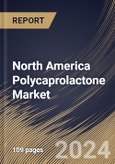PCL is a versatile polymer that can be tailored to meet specific application requirements through modifications in molecular weight, copolymerization, blending with other polymers, and surface functionalization. This versatility allows PCL to be used in various industries, including biomedical, packaging, textiles, coatings, automotive, and electronics. The adoption of PCL across diverse industries has been driven by its ability to address various engineering, biomedical, and environmental challenges.
Despite being biodegradable, PCL offers good mechanical properties, durability, and flexibility. This combination of properties makes PCL suitable for applications requiring strength, resilience, and impact resistance. PCL’s resistance to abrasive conditions and mechanical stress has fueled its use in industrial applications, construction materials, and automotive components.
As the cosmetics industry in Mexico expands, there is a higher demand for innovative formulations and ingredients that offer unique properties and benefits. According to ITA, Mexico’s cosmetics and personal care products sector is estimated to be worth USD 7.24 million in 2022. Also, exports of cosmetics and personal care products from Mexico in 2022 amounted to USD 2.2 billion. The demand for sustainable ingredients, innovative formulations, eco-friendly packaging, and regulatory compliance may drive the adoption of PCL-based products in Mexico’s cosmetics sector. In conclusion, the region’s growing cosmetics and personal care industry propels growth.
The US market dominated the North America Polycaprolactone Market by Country in 2022, and would continue to be a dominant market till 2030; thereby, achieving a market value of $291 Million by 2030. The Canada market is experiencing a CAGR of 14% during (2023 - 2030). Additionally, The Mexico market would exhibit a CAGR of 13% during (2023 - 2030).
Based on Production Method, the market is segmented into Ring Opening Polymerization, and Polycondesation of Carboxylic Acid. Based on Form, the market is segmented into Pellets, Nanosphere, and Microsphere. Based on Application, the market is segmented into Coating & Thermoplastic Polyurethane (TPU), Healthcare, and Others. Based on countries, the market is segmented into U.S., Mexico, Canada, and Rest of North America.
List of Key Companies Profiled
- Corbion N.V.
- Otto Chemie Pvt. Ltd.
- BASF SE
- Perstorp Holding AB (PETRONAS Chemicals Group Berhad)
- Daicel Corporation
- Haihang Industry Co.,Ltd. (Haihang Group)
- Merck KGaA
- Polysciences, Inc.
- Shenzhen Esun Industrial Co., Ltd.
- Shenzhen Polymtek Biomaterial Co., Ltd.
Market Report Segmentation
By Production Method (Volume, Thousand Tonnes, USD Billion, 2019-2030)- Ring Opening Polymerization
- Polycondesation of Carboxylic Acid
- Pellets
- Nanosphere
- Microsphere
- Coating & Thermoplastic Polyurethane (TPU)
- Healthcare
- Others
- US
- Canada
- Mexico
- Rest of North America
Table of Contents
Companies Mentioned
- Corbion N.V.
- Otto Chemie Pvt. Ltd.
- BASF SE
- Perstorp Holding AB (PETRONAS Chemicals Group Berhad)
- Daicel Corporation
- Haihang Industry Co.,Ltd. (Haihang Group)
- Merck KGaA
- Polysciences, Inc.
- Shenzhen Esun Industrial Co., Ltd.
- Shenzhen Polymtek Biomaterial Co., Ltd.
Methodology

LOADING...








